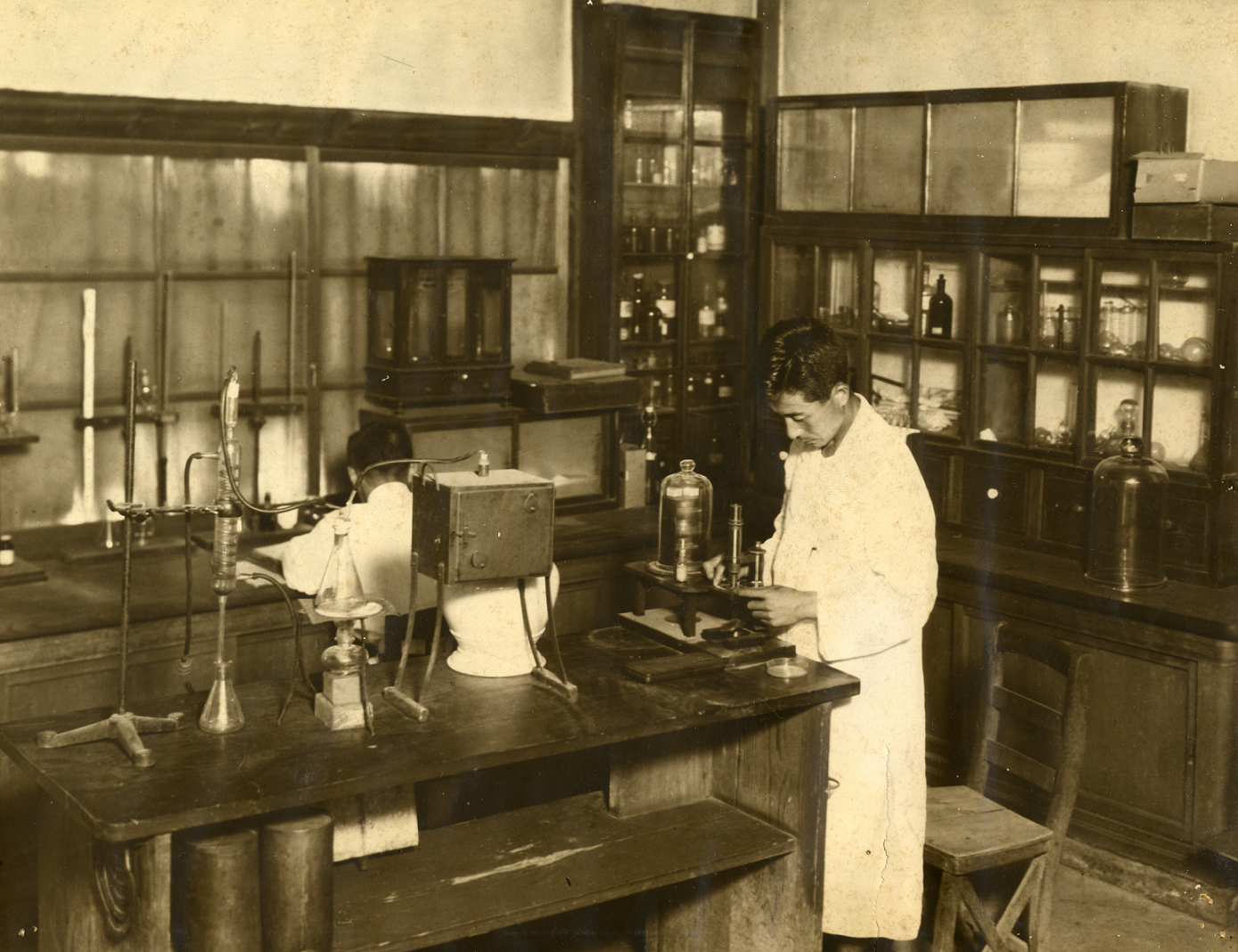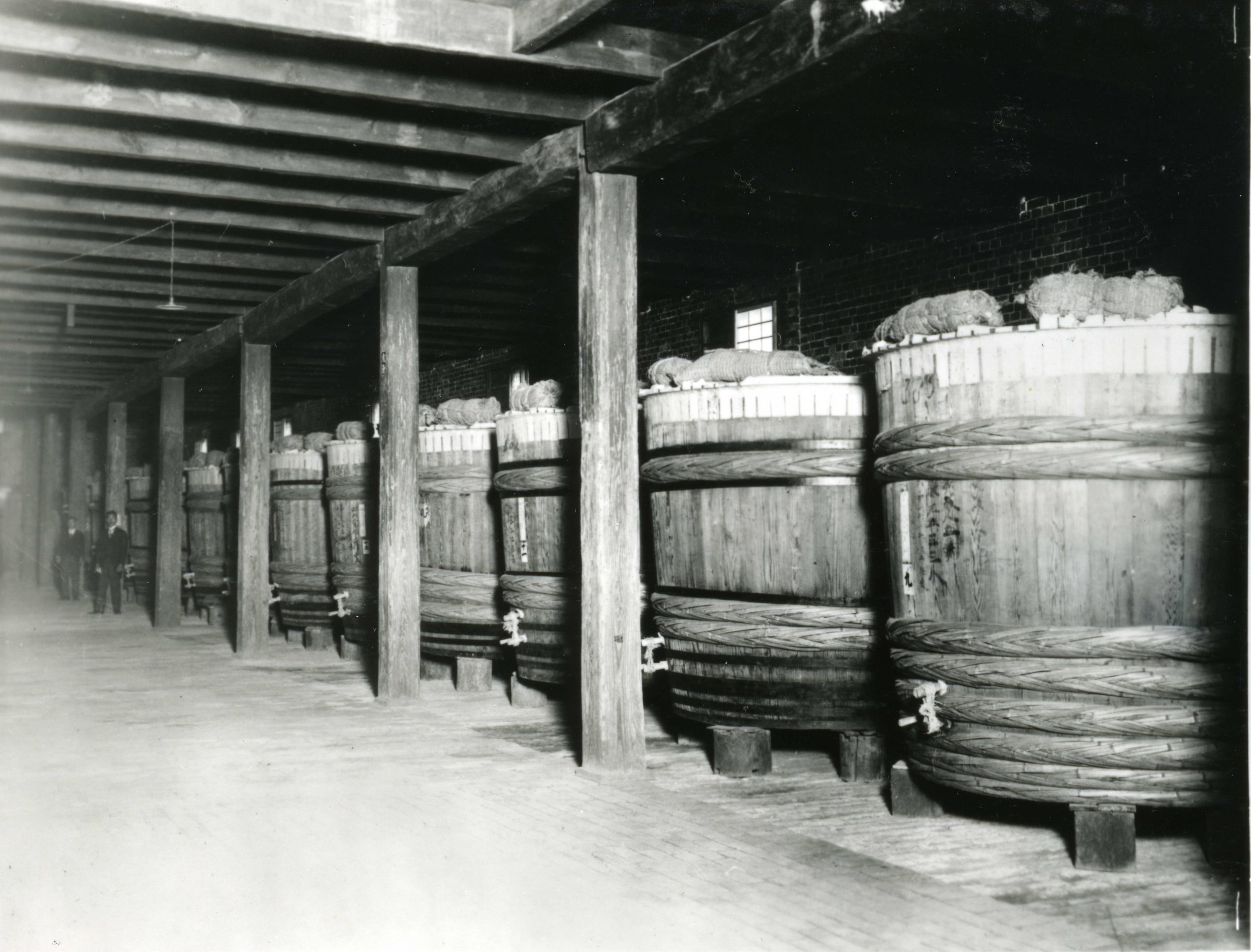Hello, this month’s article is about “Nadagogo”, the largest sake brewing region in Japan and in the world!
Nadagogo literally means the five sake production areas for Nada sake. And the five areas are Imazu, Nishinomiya (in present-day Nishinomiya City), Uozaki, Mikage and Nishigo (in present-day Kobe City), in the order from the east to the west in Hyogo Prefecture. As described in the last article, Nishinomiya, where the Sake Museum is located, is one of the areas of Nadagogo.
より(縮小)-1-1024x686.jpg)
Actually today’s well-known areas called Nadagogo hadn’t been established yet in the Edo period (1603-1867). Here’s when and how Nadagogo was established. As explained in the last article titled “Nishinomiya, The City of Sake”, Nishinomiya prospered since the times when the surrounding areas were still undeveloped. Therefore sake brewing also began earlier than the other four areas (Imazu, Uozaki, Mikage and Nishigo). However, after the sake brewing techniques were passed on to the four areas, those areas developed even more than Itami and Nishinomiya, where sake brewing had already been established.
According to the book titled “An Experimental Study of Nada Sake Making in Settsu Province” (published in 1888), the five sake brewing areas became one group named Nadagogo for the first time in 1886. It is described in the book as follows: “In 1886, sake brewers of Uozaki, Mikage and Nishigo areas discussed and decided to establish the Nadagogo Brewers Association. Upon its establishment, sake brewers of Nishinomiya and Imazu areas joined and the five areas established the association together.” (A quote from the book).
-1024x576.jpg)
Subsequently, let’s see how Nadagogo has become the largest sake brewing region in Japan. The first factor is the ingredients of sake – rice and water. In the Edo period, harvested rice were collected by the Edo Shogunate and gathered to Osaka as annual tax. Because Osaka was located near Nishinomiya and Kobe, the sake brewers in the Nadagogo area was able to obtain stable and sufficient amount of rice for the sake making. In the late Edo period (the 19th century), rice grown in Settsu Province (where Nishinomiya is located) and the neighboring Provinces were found suitable for sake brewing, which also helped the sake brewers of the region. Additionally, water drawn from a certain area of Nishinomiya was found suitable for sake brewing. The water was called Miyamizu and it became so popular that it was transported to the areas even outside of Nishinomiya.
The second factor is the climate. Nadagogo region is surrounded by the Rokko Mountains to the north. The cold and dry north wind that blows down the mountains, known as Rokko Oroshi, was utilized to cool down the steamed rice during the sake brewing and to dry the washed sake brewing tools. The brewery buildings in this region were built stretching from east to west in order to take in the wind into the buildings.
The third factor is the technique of sake brewing craftsmen from Tamba region (in Hyogo Pref.) called Tamba Toji. Tamba Toji are known as one of the three best groups of sake brewing craftsmen in Japan, and their skills are authentic.
Thanks to those three factors and more of other various factors, such as rice polishing by waterwheels and the business relation with the market in Edo (present-day Tokyo), Nadagogo has become the largest sake brewing region in Japan. We will deep dive on to those factors one at a time as a monthly topic, so please look forward to it!







Indeed, Edo period was the time of rice.